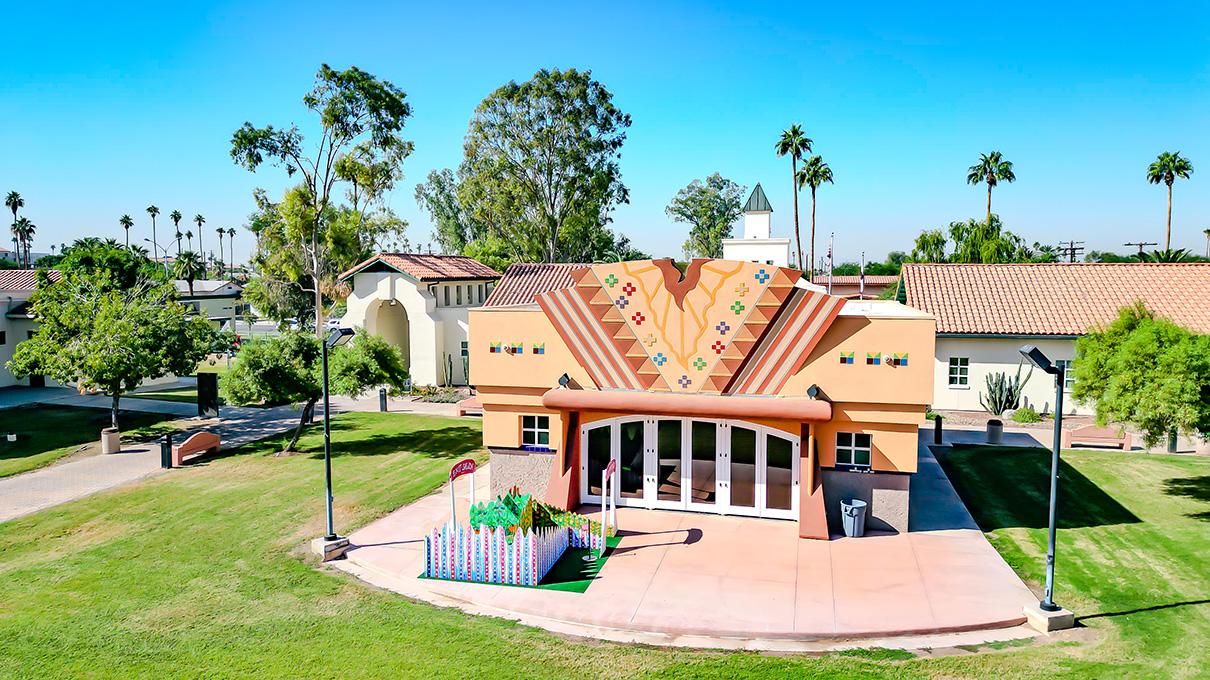Innovative Partnership Provides Compensation for Student Teachers
Collaboration between SDSU, US PREP and Feaster Charter School takes aim at teaching shortage, provides a model for future district agreements.

Every day Rafdely Aguilar spends in the classroom at Mae L. Feaster Charter School in Chula Vista brings a new heartwarming experience.
“I love walking into the room and hearing the students say “buenos dias” or “good morning” to me, and some of them even give me a hug,” said Aguilar, a student in San Diego State University’s bilingual teaching credential program. “They're so excited to be with me. It's barely been five weeks and I can already see them changing in a positive way.
“It lets me know that this is what I want to do.”
Were it not for a new partnership with Feaster Charter, Aguilar might not be student teaching this semester at all.
Aguilar is among five SDSU bilingual credential students receiving a $26,000 stipend from Feaster Charter to complete their normally uncompensated student teaching at the school. The initiative was made possible thanks to SDSU’s participation in US PREP, a Bill and Melinda Gates Foundation-funded coalition to transform teacher preparation.
Building off US PREP’s model, the university and the school worked together to implement Strategic Staffing, a creative reallocation of funds that allows schools to compensate student teachers for their work. The idea is to support aspiring teachers who might not otherwise have been able to afford rigorous credential programs while giving schools a pool of motivated teachers well-prepared to step into permanent positions after graduation.
It’s an arrangement SDSU is looking to replicate in concert with school districts around the county. The hope is that such a partnership will help make a dent in California’s persistent teacher shortage, which sees districts across the state struggling to fill vacant positions.
Providing opportunity
“Many years ago I wanted to be a kindergarten teacher, but I couldn’t student teach because I had to earn money,” said Sarah Garrity, interim senior associate dean in SDSU’s College of Education. “It's huge to allow students the opportunity to learn while actually getting paid for their work. It also shows that we value them as professionals and it allows a whole group of students who were previously denied a chance to become teachers the opportunity to do what they love and what they're passionate about."
That includes students like Aguilar. This semester, she works in the classroom alongside her guide teacher, Martha Arizmendi, Mondays through Thursdays from 7:30 a.m. to 3 p.m. Feaster has also given her the opportunity to earn extra pay by tutoring after school and substitute teaching on Fridays.
"Student teaching is a year that you have to put on hold,” Aguilar said. “It is a year of hard work and there's usually no compensation for bills, transportation or gas. I think it’s one of the main reasons why students don't do the teaching credential.
“I was about to drop it before this opportunity.”
In addition to providing compensation, SDSU and Feaster Charter collaborated to bring credential candidates into the classroom earlier than usual, since classes at Feaster begin in July. The move has allowed student teachers to be on hand as their guide teachers prepare their classrooms, and to meet parents and community members on back-to-school nights.
Greater collaboration
“Resident teachers who are fully invested in the dual immersion program can collaborate more closely with their fellow teachers and they can work together to design integrated lesson plans that seamlessly blend language acquisition with subject content,” said Jimmy Gordillo, VAPA (visual and performing arts) principal of Feaster Charter. “This collaboration allows for a more holistic educational experience, where language is not treated as an isolated subject but as a tool to access various areas of knowledge.
“Because of this, resident teachers have an opportunity to be fully integrated into the fabric of our Feaster Charter community.”
Garrity credits US PREP, which SDSU joined in 2019, for spurring the innovation. She first met Feaster Charter executive director Rosario Villareal at a US PREP convening in Texas, laying the groundwork for their collaboration.
“I think one of the great things about the US PREP model is it really brings together universities and school districts,” Garrity said. “We sit down every month and think about how to address the real problems of practice.
“How this came about with Feaster Charter was so beautiful — and it really happened because we were sitting around the table as collaborators and partners.”


